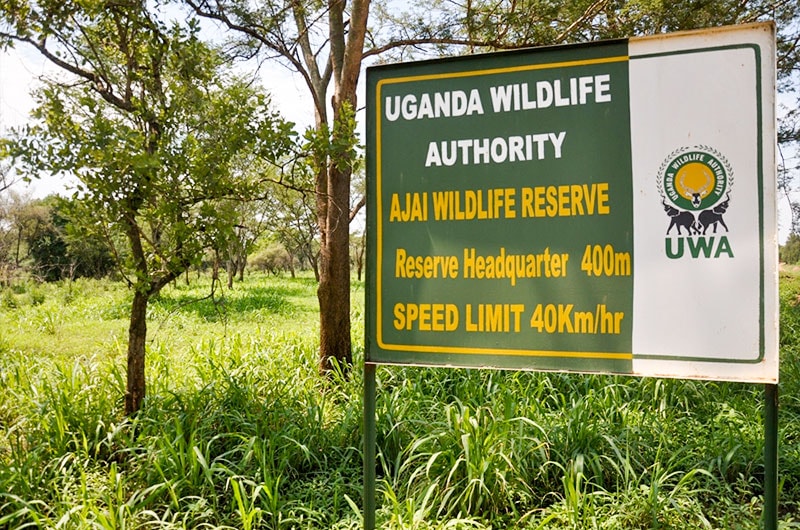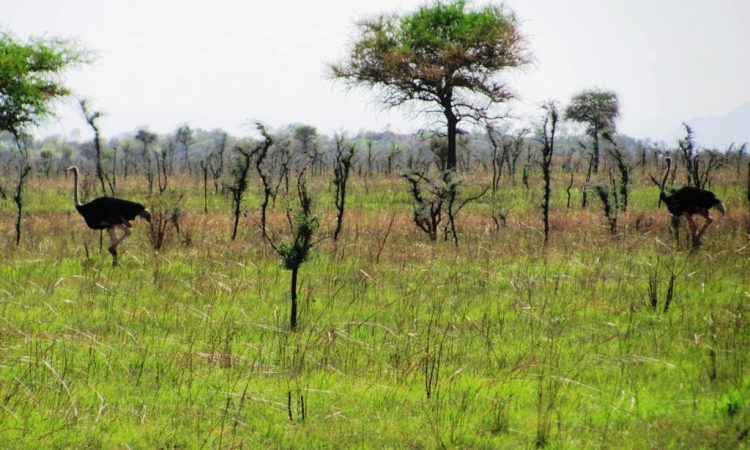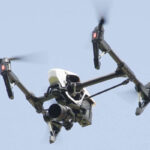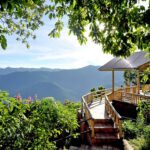Ajai Wildlife Reserve
Situated within North-western Uganda in Arua district, Ajai Wildlife Reserve is the only Game/Wildlife Reserve found in the district or West Nile region and stands at an elevation of 658 meters above sea level. Historically, this Reserve was put under the personal watch and protection of a local powerful Chief named Ajai in 1937 and until 1980, it was protected as one of the few remaining populations of white Rhinos in the country that are now extinct in the Reserve but only found in one place in the country-Ziwa Rhino Sanctuary.
When the locals began hunting Rhinos of the Reserve, the World Wildlife Fund (WWF) sponsored an anti-poaching project that was conducted in the Reserve in the 1960s much as it did not stop the poachers from hunting them until they became extinct. However in 2008, the Uganda Wildlife Authority took a step to privatize the operations of the Reserve and special consideration was offered to the Uganda Wildlife Safaris Limited, a hunting and Photographic Tour Operator.
This exceptional 166 square kilometers Wildlife Reserve is comprised of plains of grasses, swamps and woodlands offering shelter to different wildlife and bird species. Much as it was originally established to protect the white Rhinos (which eventually became extinct due to poaching), other wildlife species are inhabited in the Wildlife Reserve and they include Hippos, Antelopes (Uganda Kobs, bushbucks, Sitatunga, common duikers, Oribis, waterbucks and Lelwel hartebeests), Lions, leopards, primates (black and white colobus monkeys, Olive baboons and Vervet monkeys), Warthogs and Buffaloes. Reptiles at the Reserve also include Nile crocodiles, snakes especially Pythons. Ajai Wildlife Reserve is also a wonderful spot for bird watching.
Climate and weather experienced around Ajai Wildlife Reserve
This destination lies on the western banks of the Albert Nile and is dominated by grass and experiences a tropical climate with heavy rains received from March to May and October to November.
How to Access Ajai Wildlife Reserve?
Since it is a bit challenging to reach Ajai Wildlife Reserve due to the poor state of roads that lead to it, it is very accessible by road from Gulu district. Unfortunately, there are also no accommodation facilities within the Reserve thus tourists intending to visit the site have to either connect to Murchison Falls National Park and within Gulu or Arua Towns for overnight/s. It is about six and a half hours’ drive by road from Kampala and just few minutes flight for air transport (landing at Arua or Gulu Town). Include this Wildlife Reserve in your itinerary for Murchison Falls National Park, the closest National Park within the area to have a memorable experience during Uganda safaris.
Besides Ajai Wildlife Reserve, Uganda is known for many other Reserves across the country that include Karuma, Katonga, Bugungu, Pian Upe, Matheniko, Bokora Corridor, Toro-Semliki and Kabwoya Wildlife Reserves that can be explored during Uganda safaris.
Therefore, Ajai Wildlife Reserve is one of the numerous Wildlife Reserves in Uganda under the management pf Uganda Wildlife Authority and offers numerous wildlife species such as waterbucks, Oribis, bushbucks, warthogs, olive baboons, Hippos and common duikers as well as several species of birds.
Matheniko Wildlife Reserve
On top of exploring the 10 National Parks, tourists can visit Wildlife Reserves during Uganda Safaris and one of which is the Matheniko Wildlife/Game Reserve. This spectacular site is found in the Conservation Area of the Karamoja sub-region in north-eastern Uganda and so far the 5th of the most threatened Wildlife Protected Areas in the country. Much as few tourists visit this destination, it offers exceptional wildlife and bird species as well as unforgettable wildlife experiences.
Situated within Moroto district, Matheniko Wildlife Reserve is part of the corridor of Conservation Areas in the Karamoja sub-region that extend from Kidepo Valley National Park through Pian Upe and Bokora Corridor Wildlife Reserves but on the north-eastern side to Matheniko Wildlife Reserve is the Uganda-Kenya border. Additionally, this Protected Area lies within the Somali-Maasai environment of semi-desert grassland with portion of it being scrubland and stands at an elevation of 1070 to 1830 meters (3510 feet to 6000 feet) above sea level.
Unlike other Wildlife Reserves within the region, Matheniko Wildlife Reserve offers shelter to fewer species of wildlife thus making it less busy compared to the others. It stretches for approximately 1520 square kilometers (590 square miles) and is managed by the Uganda Wildlife Authority (UWA).
Climate and Vegetation of Matheniko Wildlife Reserve
Due to its location, the average rainfall of the Reserve is estimated at about 670 millimeters with heavy rainfall being experienced from months of March to May and also in November and its landscape is dominated by Red Acacia and the desert date (scientifically known as Balanites aegyptiacus), bush willows (combretum apiculatum), Red spike-thorns (Gymnosporia senegalensis) and Harrisonia abyssinica. There are also a wide range of common shrubs and these are the butterfly pea (scientifically known as Clitoria ternatea) and the wooly caper bushes (Capparis tomentosa).
Attractions within Matheniko Wildlife Reserve
Much as they are in small numbers, wildlife such as mountain reedbucks, Blue duikers, lesser kudus, common duikers, Roan antelopes, waterbucks, Uganda Kobs, Bohor reedbucks, Elands, wildcats, Bright’s gazelles, spotted hyenas, Oribis and Topis are common within Matheniko Wildlife Reserve.
Some birds are also found within the Reserve and they include Egyptian swallows, Grey Cuckoo shrike, Eastern bronze-napped pigeons, Alpine Chat, Dusky Turtle Doves, Thick-billed honey guide, Cattle egrets, Lemon Doves, Hartlaub’s Turaco, Ostriches, Abyssinian ground hornbills, red-billed oxpeckers, African Hill Babblers, Black-throated wattle-eye, the mountain yellow warblers and the Pygmy Falcon among others.
Besides that, there are several Rock Paintings within Matheniko and Bokora Corridor Wildlife Reserves and are said to date back to 3000 years and are said to be works of Nilotic people and Kushites.
When it comes to places to spend overnights, there are no accommodation facilities much as the Uganda Wildlife Authority has put a lot of emphasis on developing tourism infrastructures of the Wildlife Reserve in the past years where bidders were invited in a Campaign to raise funds for constructing a facility (6-roomed Guesthouse) within Matheniko Wildlife Reserve.
Therefore, Matheniko is one of the important sites you can visit within the Karamoja sub-region of North-eastern Uganda and boasts of wildlife species such as lesser kudus, common duikers, Roan antelopes, waterbucks, Uganda Kobs, Bohor reedbucks, Elands, wildcats, Bright’s gazelles, spotted hyenas in addition to birds such as Egyptian swallows, Eastern bronze-napped pigeons, Cattle egrets, Hartlaub’s Turaco, Abyssinian ground hornbills, red-billed oxpeckers, the mountain yellow warblers and many others.


